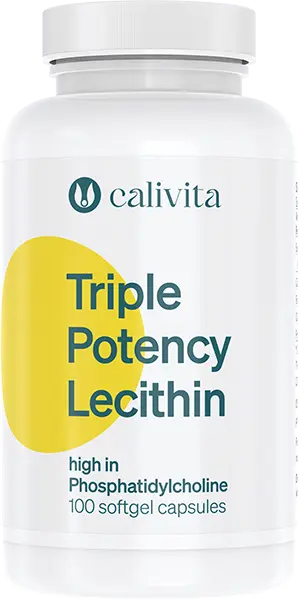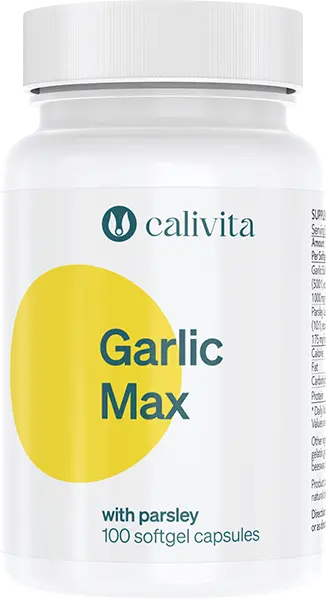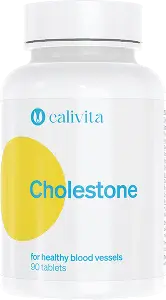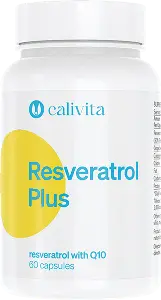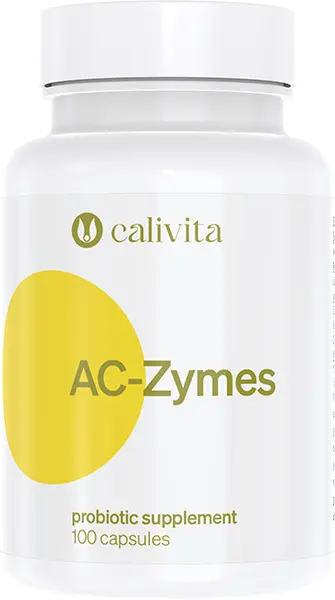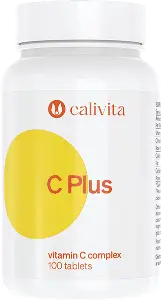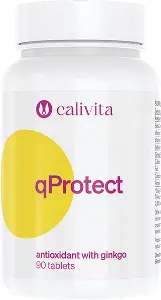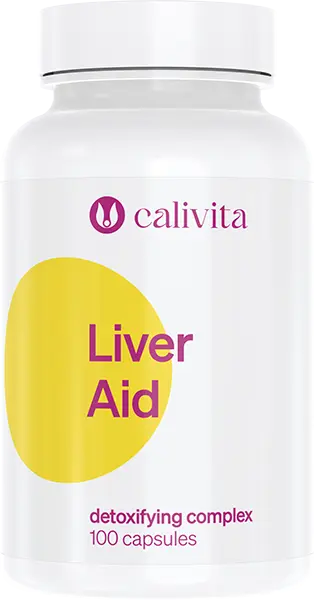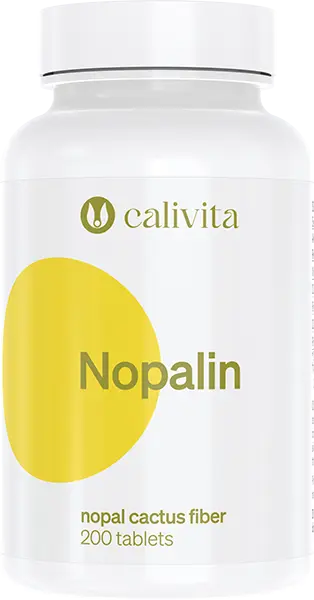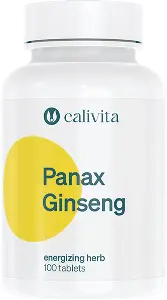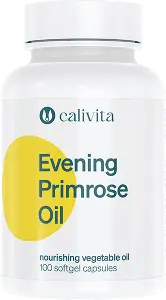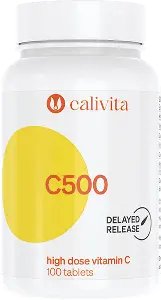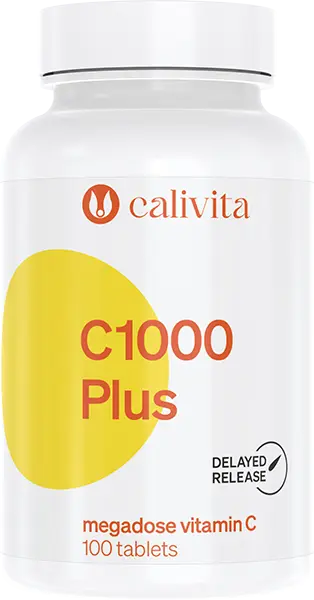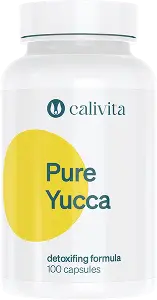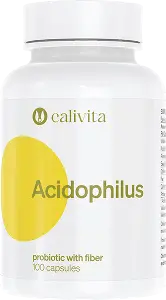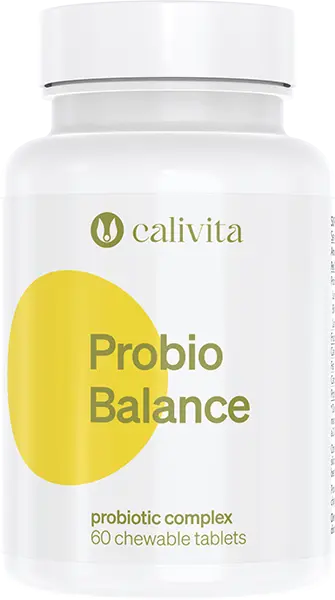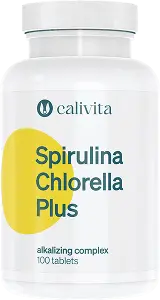Cholesterol
High cholesterol - cholesterol-lowering preparations
Products available in the global Calivita International network, may not be available in all countries. Calivita products list is for informational purposes only! Represents the most appropriate supplements to support the body's functions for a given ailment. None of the products, or product ingredients referred to herein are intended to diagnose, treat, cure, or prevent any disease, or medical condition. No statement, claim, opinion or information relating to any product, or product ingredient is intended to be, nor should be construed as medical advice.
Prevent high cholesterol levels
According to WHO statistics, from among the non-communicable diseases, cardiovascular diseases are the leading causes of death. The most precise markers of these ailments are the levels of so called “blood lipids”, that is cholesterol (LDL and HDL) and triglyceride (fat absorbed into blood from food).
Cholesterol is a vital building block of our cells. It is the basic compound of certain hormones and enzymes. Our daily demands are abundantly covered by ingested food, but our body also synthesizes it on a daily basis. Cholesterol circulating in blood can be divided into several groups. To explain this in plain words, HDL is the good cholesterol, while LDL is the bad cholesterol. The former carries cholesterol from the blood to the liver that is, it reduces the amounts of fat circulating in the blood, while the latter transports it from the liver to cells. If LDL levels are high, this increases the chances that excess cholesterol adheres to blood vessel walls thereby reducing their penetrability, making things difficult for the heart and in the long run causing arteriosclerosis, high blood pressure or infarction. Fortunately, these risk factors can be easily controlled with regular screening.
If medical tests show abnormalities we have several solutions to choose from: diet, alternative cures, or drug therapy. However, in the case of mild symptoms or for prevention it is expedient to try milder cures as for example increased physical activity, change of diet as well as natural methods.
Garlic has been a popular addition to the medicine cabinet for a long time. Several studies have shown that it may effectively reduce “bad” (LDL) cholesterol levels while increasing the of “good” (HDL) levels. According to a 2008 Polish study, garlic causes a significant drop of LDL even in the short term, while at the same time increases HDL levels. Another study of 2007 reported the same results and in addition, beneficial changes in triglyceride levels.
Some formulas combine the beneficial effects of garlic with other cholesterol reducing active ingredients like apple pectin. Water soluble fibers like pectin are able to bind cholesterol from bile acid and prevent it from being reabsorbed into circulation, so the liver is “forced” to make up for this loss from the blood, reducing cholesterol levels by doing so.
Another much studied and promising natural active ingredient group is polyunsaturated fatty acids, like omega-3 fatty acids, EPA and DHA. Several studies have shown that it has a beneficial effect on cholesterol levels if the amounts of saturated fatty acids are reduced and unsaturated fatty acids are increased at the same time in the diet. The most natural way to do so is consumption of sea fish. For those who cannot obtain it in adequate amounts, an excellent alternative may be a well-chosen dietary supplement, which not only contains these beneficial fatty acids but allows the less possible “other” (for example saturated) fatty acids to enter the body. A formula, which contains a more concentrated form of omega-3 fatty acids, purified by molecular distillation, is already available.
The popular Nopalcactus has been studied thoroughly for its health benefits. Many studies have confirmed Nopal may help regulate blood cholesterol levels. These studies have proven that by enhancing the activity of enzyme systems in the liver, that is, by not “binding” cholesterol – pectin in Nopal may be able to reduce LDL levels.
The algae Chlorella and Spirulina are also well known to. Both species are precious protein, mineral and fiber sources but studies suggest that they may be helpful in regulating blood lipid levels. For example, in the participants of a 2008 study it reduced triglyceride and total cholesterol levels while at the same time their HDL cholesterol levels were elevated.
Recent results have shown that probiotics can also support our health by reducing cholesterol levels. Studies suggest that certain species like Lactobacillus acidophilus may be able to transform bile acids in such a way that instead of being reabsorbed, they are eliminated with stools. As a result, the liver would use free cholesterol from the blood for bile production, reducing cholesterol levels by doing so. If we also supplement with fibers such as psyllium, we may further enhance the beneficial effects of Lactobacillus acidophilus on blood lipid levels. According to other studies, the prebiotics fructo-oligosaccharides may also be effective in reducing total cholesterol levels.
Undoubtedly, the active ingredients above may be of paramount importance in prevention, but we can also see that they are useful in the case of mild symptoms. So before we decide on commencing aggressive drug therapy, after consulting a doctor of course, we have many natural and mild alternatives to choose from. Why wouldn’t we make use of them?
Sources:
Global status report on noncommunicable diseases 2010 – WHO
Effects of short-term garlic supplementation on lipid metabolism and antioxidant status in hypertensive adults - Gra¿yna Duda1, Joanna Suliburska2, Danuta Pupek-Musialik3
Effects of anethum graveolens and garlic on lipid profile in hyperlipidemic patients - Javad Kojuri*, Amir R Vosoughi and Majid Akrami, Lipids in Health and Disease 2007, 6:5
Medicinal Use Of The Latin Food Staple Nopales: The Prickly Pear Cactus - Gutierrez, Miguel Angel, University of California, Los Angeles, Nutrition Bytes, Department of Biological Chemistry, UCLA, David Geffen School of Medicine, UC Los Angeles, 1998.
Cholesterol-Lowering Effects of Probiotics and Prebiotics:A Review of in Vivo and in Vitro Findings - Lay-Gaik Ooi and Min-Tze Liong, International Journal of Molec ular Sciences, 2010, 11, 2499-2522
Effects of probiotic bacteria on diarrhea, lipid metabolism, and carcinogenesis: a review of papers published between 1988 and 1998 - Nicole M de Roos and Martijn B Katan Am J Clin Nutr 2000;71:405–11
Effect of Chlorella vulgaris on lipid metabolism in Wistar rats fed high fat diet - Hee Sun Lee, Hoon Jung Park, Mi Kyung Kim, Nutrition research and practice (2008) Vol.: 2, Iss.: 4
Exercise and spirulina control non-alcoholic hepatic steatosis and lipid profile in diabetic Wistar rats - São Paulo State University Júlio de Mesquita Filho, Department of Physical Education, Institute of Biosciences
Cholesterol-lowering effects of psyllium intake adjunctive to diet therapy in men and women with hypercholesterolemia: meta-analysis of 8 controlled trials - James W Anderson, Lisa D Allgood, Ann Lawrence, Linda A Altringer, George R Jerdack, David A Hengehold and Jorge G Morel, American Journal of Clinical Nutrition, Vol. 71, No. 2, 472-479, February 2000
Recent results have shown that probiotics can also support our health by reducing cholesterol levels. Studies suggest that certain species like Lactobacillus acidophilus may be able to transform bile acids in such a way that instead of being reabsorbed, they are eliminated with stools. As a result, the liver would use free cholesterol from the blood for bile production, reducing cholesterol levels by doing so. If we also supplement with fibers such as psyllium, we may further enhance the beneficial effects of Lactobacillus acidophilus on blood lipid levels. According to other studies, the prebiotics fructo-oligosaccharides may also be effective in reducing total cholesterol levels.
Sources:Undoubtedly, the active ingredients above may be of paramount importance in prevention, but we can also see that they are useful in the case of mild symptoms. So before we decide on commencing aggressive drug therapy, after consulting a doctor of course, we have many natural and mild alternatives to choose from. Why wouldn’t we make use of them?
Global status report on noncommunicable diseases 2010 – WHO
Effects of short-term garlic supplementation on lipid metabolism and antioxidant status in hypertensive adults - Gra¿yna Duda1, Joanna Suliburska2, Danuta Pupek-Musialik3
Effects of anethum graveolens and garlic on lipid profile in hyperlipidemic patients - Javad Kojuri*, Amir R Vosoughi and Majid Akrami, Lipids in Health and Disease 2007, 6:5
Medicinal Use Of The Latin Food Staple Nopales: The Prickly Pear Cactus - Gutierrez, Miguel Angel, University of California, Los Angeles, Nutrition Bytes, Department of Biological Chemistry, UCLA, David Geffen School of Medicine, UC Los Angeles, 1998.
Cholesterol-Lowering Effects of Probiotics and Prebiotics:A Review of in Vivo and in Vitro Findings - Lay-Gaik Ooi and Min-Tze Liong, International Journal of Molec ular Sciences, 2010, 11, 2499-2522
Effects of probiotic bacteria on diarrhea, lipid metabolism, and carcinogenesis: a review of papers published between 1988 and 1998 - Nicole M de Roos and Martijn B Katan Am J Clin Nutr 2000;71:405–11
Effect of Chlorella vulgaris on lipid metabolism in Wistar rats fed high fat diet - Hee Sun Lee, Hoon Jung Park, Mi Kyung Kim, Nutrition research and practice (2008) Vol.: 2, Iss.: 4
Exercise and spirulina control non-alcoholic hepatic steatosis and lipid profile in diabetic Wistar rats - São Paulo State University Júlio de Mesquita Filho, Department of Physical Education, Institute of Biosciences
Cholesterol-lowering effects of psyllium intake adjunctive to diet therapy in men and women with hypercholesterolemia: meta-analysis of 8 controlled trials - James W Anderson, Lisa D Allgood, Ann Lawrence, Linda A Altringer, George R Jerdack, David A Hengehold and Jorge G Morel, American Journal of Clinical Nutrition, Vol. 71, No. 2, 472-479, February 2000
















